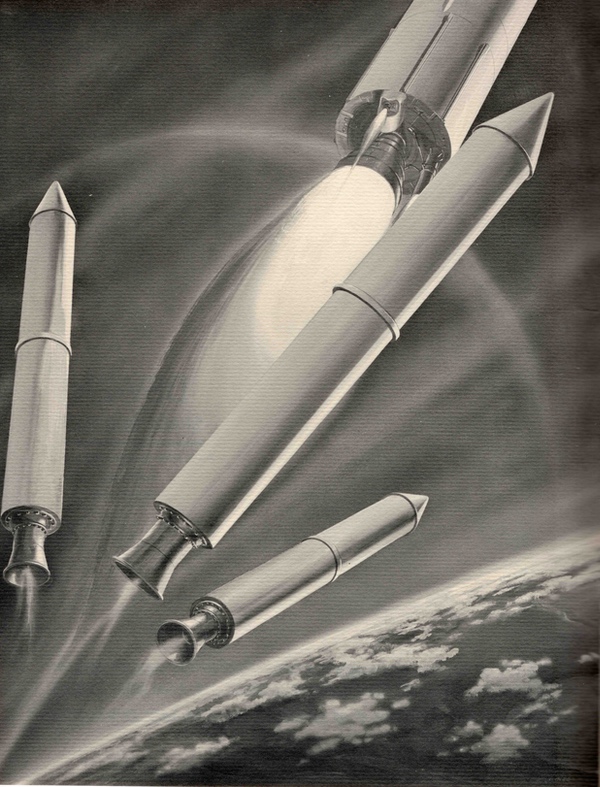The
|
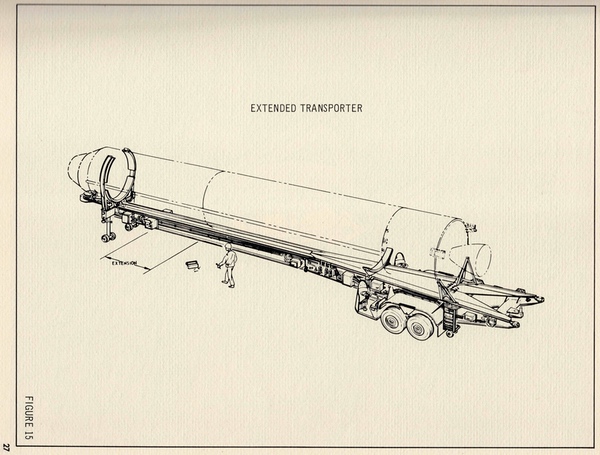 The Thor pads at Vandenberg were kilometers away from the storage and processing facilities. They were towed to the launch sites on trailers. (credit: Douglas Aircraft Company brochure) |
Although Thor launched unclassified payloads from Florida, most of the Vandenberg Thor launches were classified and were only officially declassified starting in the 1990s. Because of their missions, the Air Force released very few photos of the launches. There were unclassified photos of most of the launches in military and corporate archives, but it wasn’t until dedicated researcher Peter Hunter began laboriously sorting and scanning hundreds of photos in a corporate collection in the late 1990s that it was possible to document many of the launches.
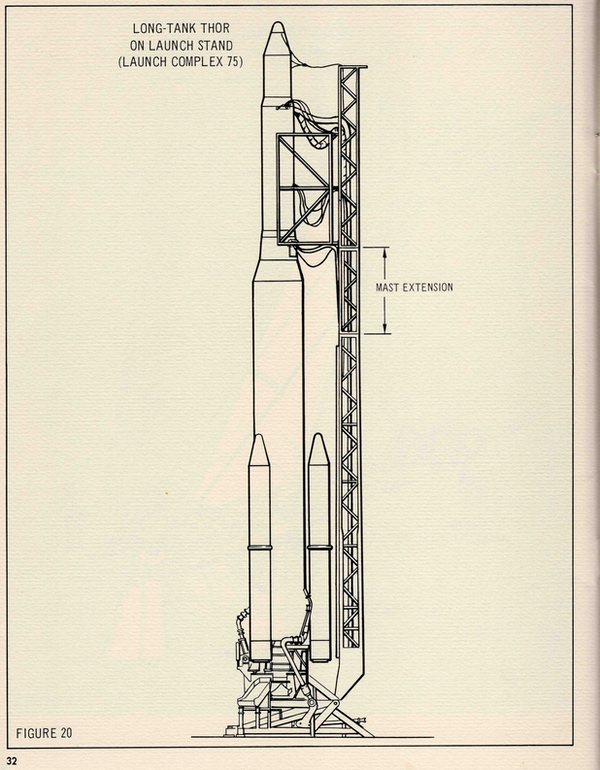 The early Thor pads at Vandenberg were relatively minimalist. Most launch preparation was performed with the vehicle horizontal and it was erected vertically only a short time before launch. (credit: Douglas Aircraft Company brochure) |
Recently, even more photos have become available of early Thor operations at Vandenberg, such as preparation for launch, and the ground support equipment used at several of the early Thor pads. The photos and illustrations provide a good sense of the size of the vehicle as well as the relative isolation of the early launch complexes, some of which were located very close to the Pacific Ocean. Thor burned kerosene and liquid oxygen, and these were trucked out to the remote pads.
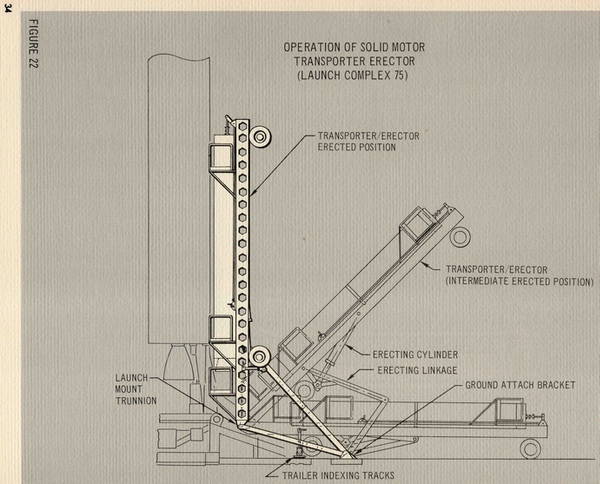 As payloads grew in mass, Douglas Aircraft Company added solid rocket motors to the Thor. The solid rocket motors were taken to the pad on trailers and the entire trailer was tilted to attach the rocket to the core vehicle. (credit: Douglas Aircraft Company brochure) |
Most of the military payloads placed into orbit by Thor in the early 1960s launched from a few pads at Vandenberg Air Force Base in California. Although they originally had different names, they were eventually designated Space Launch Complex 1 with its East and West pads, Space Launch Complex 2, also with East and West pads, and Space Launch Complex 10. There was also a pad for training Royal Air Force crews to launch Thor missiles, which the RAF operated in the United Kingdom, although not all RAF launches were from that pad.
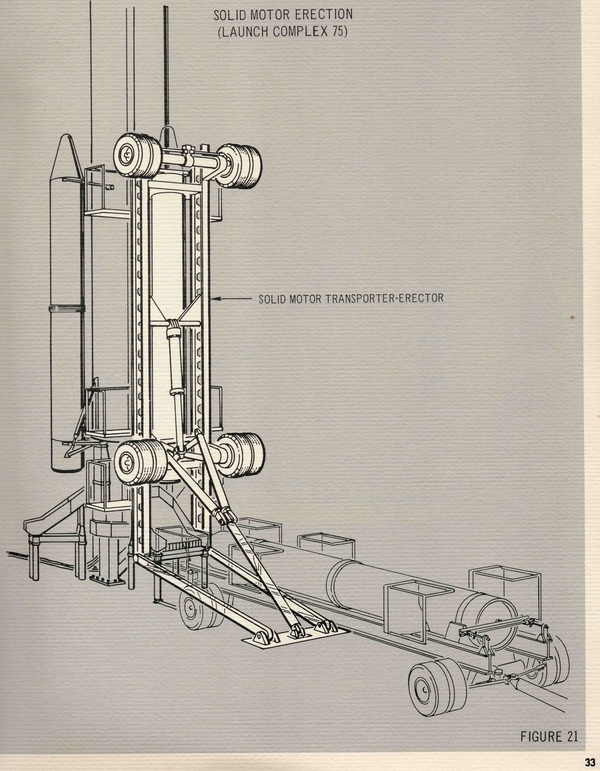 Three SRMs were attached to early Thors to increase performance. The first of these launches took place in March 1963 with a LANYARD reconnaissance satellite, but it failed to reach orbit. (credit: Douglas Aircraft Company brochure) |
Eventually, by the mid-1960s, Thors were also launched from a converted Atlas pad, Space Launch Complex 3 West, a location that was initially the Navy’s Point Arguello Launch Complex (PALC) before it was incorporated into Vandenberg. Some Atlas and Thor rockets in the early years officially launched from PALC pads before those pads were redesignated as Space Launch Complex 3. At Vandenberg, SLC is pronounced “slick.” Slicks 1 and 10 have been retired. Nearby, Slick-10 has been preserved as a national historic site.
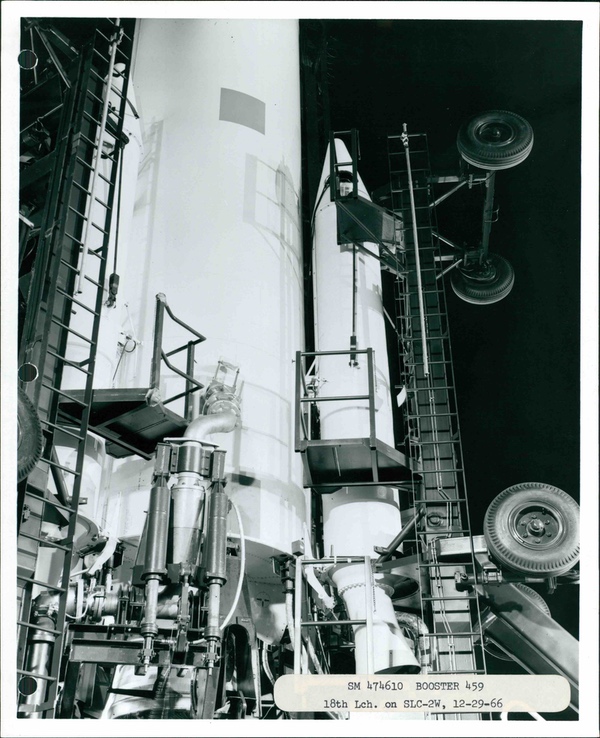 At Vandenberg throughout the 1960s multiple launch pads were launching Thor rockets. SLC-2W was later converted to handle Delta and then Delta II rockets, with the last Delta II launching from that pad in 2018. (credit: USAF) |
Many of the newly discovered photos lack labels, but they are almost all associated with Slick-2 at Vandenberg which eventually became NASA’s Delta II pad until the last Delta II launch from there in 2018. Slick-2 has now been converted to launch Firefly Alpha rockets, such as one scheduled to lift off later this week carrying several NASA-sponsored smallsats.
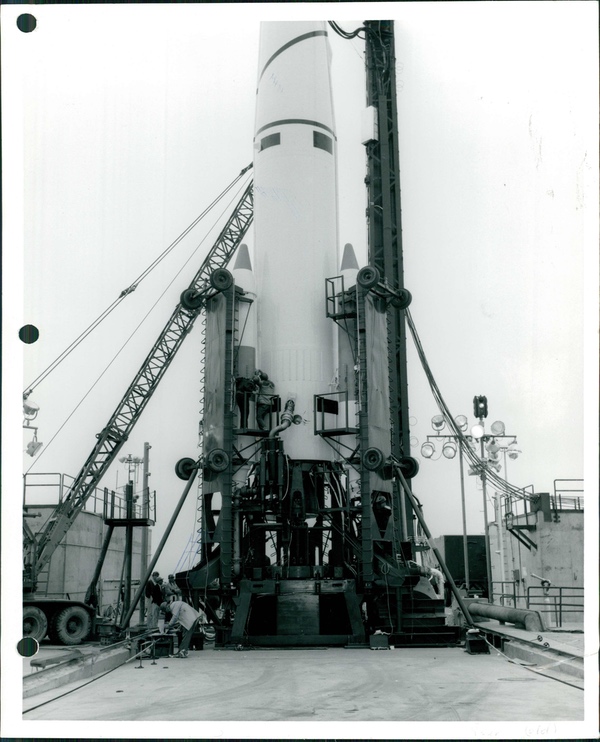 The three Castor solid rocket motors were carried to the pad on trailers and the entire trailer was rotated to attach the motor to the core vehicle. (credit: USAF) |
Thor underwent many upgrades over the years. These included upgrades to the core Thor vehicle, the addition of solid rocket motors, and the incorporation of various upper stages. The Air Force still had the Atlas for larger payloads, but even the upgraded Thor was significantly cheaper, so for many years the goal was to squeeze more performance out of the Thor to carry payloads that were getting heavier, thus avoiding a costly switch to the Atlas.
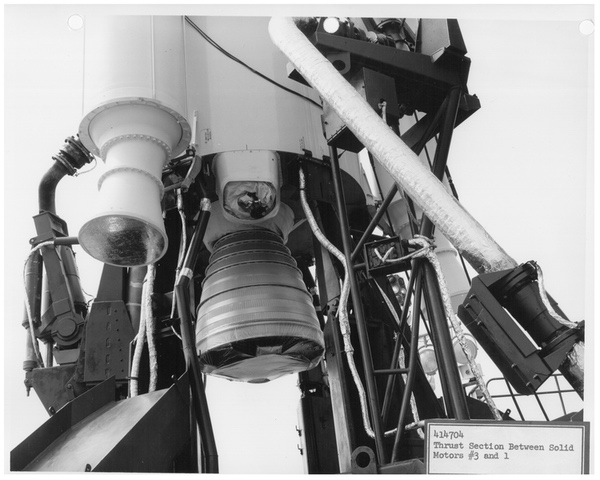 A Thor on the pad in the early 1960s. Note the coverings for the rocket nozzles. (credit: USAF) |
 The Castor solid rocket motors increased the performance of Thor enabling it to carry heavier payloads. Although Atlas was also available, it was more expensive. (credit: USAF) |
Because of its origins as a road-mobile missile intended to be moved around Europe, Vandenberg pad operations for Thor were a bit more basic than one might expect, and the photos often depict this. The rocket was driven to the launch pad on a trailer towed by a truck. The trailer was unhitched and a long shed on wheels was rolled over to protect the rocket and later the upper stage and payload when they were brought to the launch site.
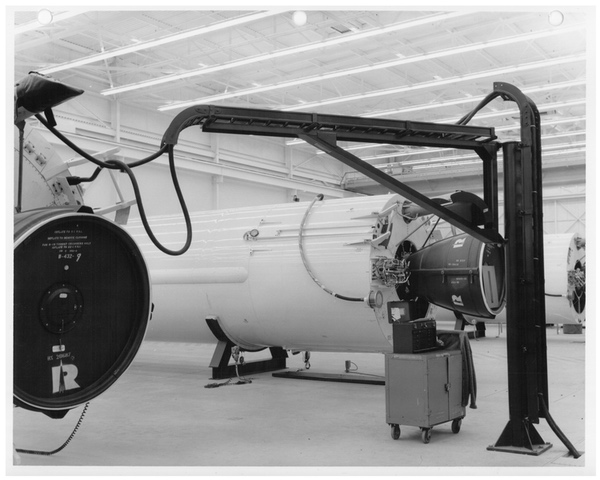 By the early-mid-1960s, the Air Force was launching multiple Thors per month. Many of them were carrying reconnaissance satellites to provide intelligence data on the Soviet Union. (credit: USAF) |
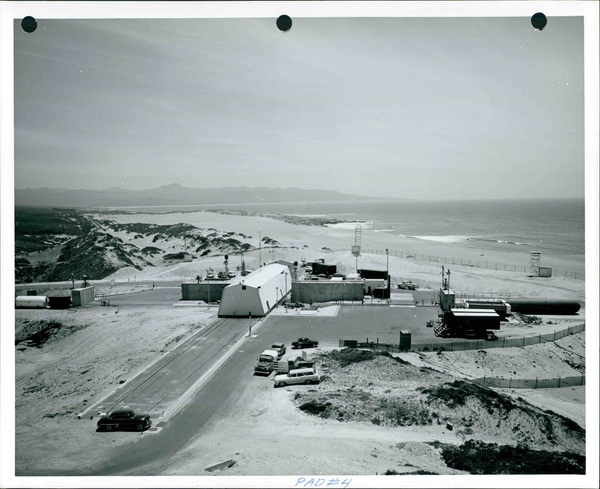 Space Launch Complex-1 West at Vandenberg was located very close to the water. The large shed covered the Thor and its payload for launch preparations and was pulled back so that the rocket could be erected. (credit: USAF) |
In preparation for launch, the entire trailer, wheels and all, was lifted vertically to set the rocket on its stand. The trailer was then lowered and removed. Other trailers were used to take solid rocket motors to the pad so they could be attached to the core stage. There was no launch tower, and until the switch to Slick-3, workers accessed the top of the rocket and the payload using long cherry-pickers. Because Thor had been designed as a missile, it was also designed to be fueled and fired relatively quickly, but the payloads were significantly more complicated and required greater care and attention at the pad.
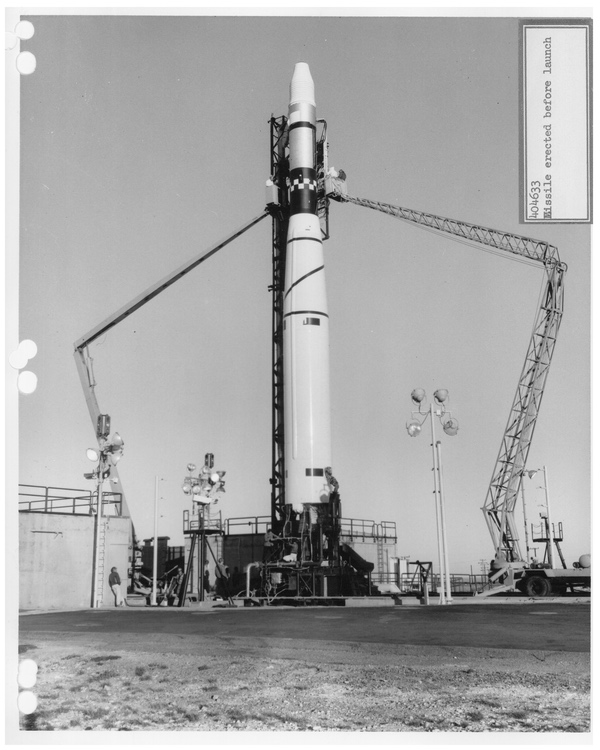 A Thor equipped with three Castor solid rocket motors and an Agena upper stage. Note the workers on the cherry picker accessing the Agena upper stage. This was most likely a CORONA reconnaissance satellite mission, and the top of the rocket, with the payload, was covered with an air conditioned cooling blanket. (credit: USAF) |
Next: PALC and Project Emily
Note: we are now moderating comments. There will be a delay in posting comments and no guarantee that all submitted comments will be posted.
